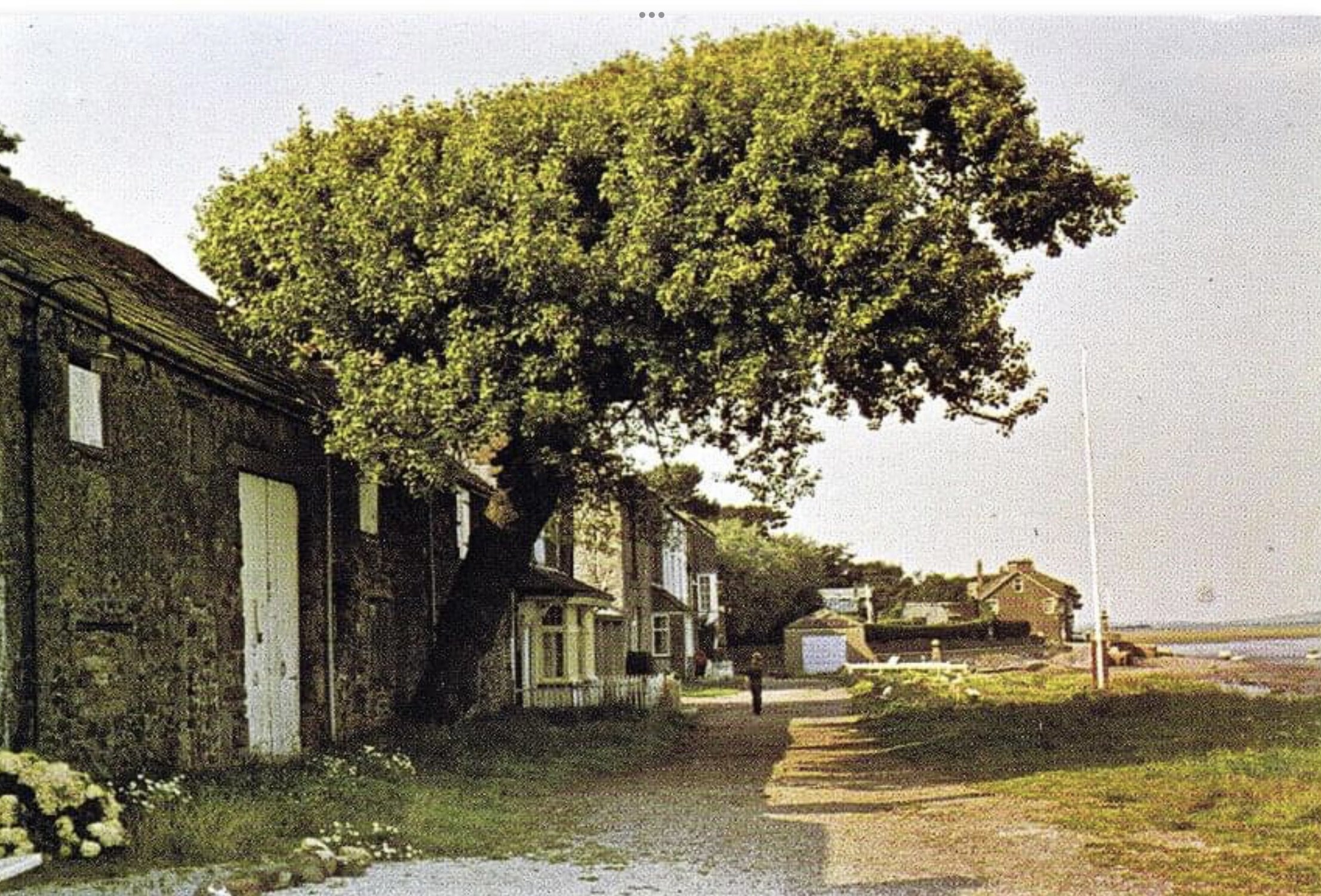
The Cotton Tree
No Longer….
At 8:15pm on the 1st of January 1998 our famous Cotton Tree, a victim of severe old age and fierce gales that struck the area on Christmas Eve 1997, toppled over.
Much loved by generations of residents and visitors and a feature of numerous photos and postcards, the tree was estimated to have been between 200 and 250 years old.
As the tree aged, it increasingly developed a tilt away from the building; finally it could not longer maintain its height and weight….and fell.
According to popular local folklore, the Cotton Tree grew from a seed deposited from an imported bale of cotton. Although not a cotton seed, those who saw the fluffy seed pod which it produced each summer, could easily see how such a story arose.
Growing From the House...
Located on Second Terrace, the tree appeared to be growing from the foot of the old barn. A special lintel had been inserted into the building over a century ago hoping to prevent structural damage.
This charming photo we date to c.1910
From the collection of George Gilchrist
An American Tree?
The origin and species of this rare tree had been disputed for years including short-tempered letters to local newspapers.
We know for certain It was a female black poplar (Populus nigra betulifolia). It is native to Northwest Europe but is rare to this country, only 600 female trees are known to exist in Britain. It is also found in America; early settlers took cuttings to New England, and it has become strongly established around the Hudson River. A popular theory is it came here as a cutting by a far-sighted sea captain on a return voyage from America, due to its usefulness in shipbuilding.
These trees were prized for use in building, wagon-making, scaffolding, and bowl-turning. Cuttings were planted around farms where the distinctive curved branches would be used for the construction of cruck-framed barns. The wood was also used for brake blocks, clogs and even arrows (a clutch was found in the Elizabethan galleon, The Mary Rose). Its heat and fire resistance made it popular for floorboards.
Present Day…
The stump of the Cotton Tree has now decayed but the tree lives on in the form of two thriving young trees which have sprung from its roots.


